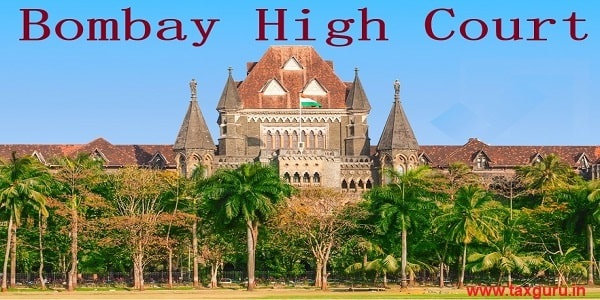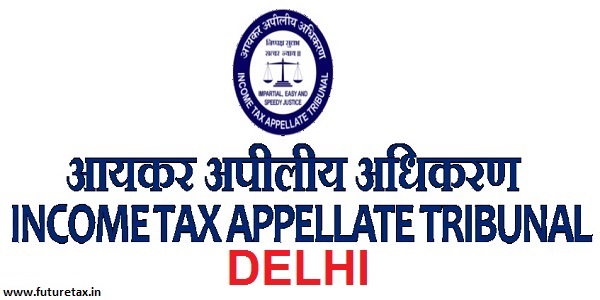
Before 01.04.2014 Agricultural Land Distance to Be Measured by Road: Bombay HC in Tamil
- Tamil Tax upate News
- February 21, 2025
- No Comment
- 93
- 16 minutes read
CIT Vs Nitish Rameshchandra Chordia (Bombay High Court)
Bombay High Court, in CIT vs. Nitish Rameshchandra Chordia, ruled that the distance of agricultural land from municipal limits must be measured by road and not by aerial distance. This ruling directly impacts the classification of agricultural land under Section 2(14) of the Income Tax Act, which determines whether capital gains tax applies. The court upheld the decision of the Income Tax Appellate Tribunal (ITAT), which had favored the assessee by rejecting the revenue’s contention that the land should be measured using a straight-line method.
The case originated from a search operation on Concrete Developers, Nagpur, which led to the assessment of the assessee’s land transactions. The Assessing Officer classified the profits from land sales as taxable short-term capital gains, arguing that the lands were within 8 kilometers of municipal limits when measured by aerial distance. However, the ITAT ruled in favor of the assessee, relying on judicial precedents that state the distance should be measured by road. The Revenue Department challenged this decision in the High Court.
The court referred to several precedents, including CIT vs. Satinder Pal Singh (2010) 229 CTR (P&H) 82, Laukik Developers vs. DCIT (2007) 108 TTJ (Mumbai) 364, and CIT vs. Shabbir Hussain Pithawala (2014) 98 DTR (MP) 62, all of which held that the approach road distance should be considered. The ruling emphasized that amendments to tax statutes generally apply prospectively unless explicitly stated otherwise. Since the amendment specifying aerial measurement took effect only from April 1, 2014, it was not applicable to the assessment year in question.
Ultimately, the High Court dismissed the Revenue Department’s appeal, affirming that capital gains tax could not be levied on the land sale in this case. The decision aligns with past rulings that agricultural land, if located beyond 8 km as measured by road, qualifies for exemption under Section 2(14). This judgment sets a significant precedent for similar disputes and reinforces the principle that when two interpretations exist, the one favoring the taxpayer should be preferred.
FULL TEXT OF THE JUDGMENT/ORDER OF BOMBAY HIGH COURT
1. As requested by the parties, since the question of law canvassed in all these matters are same, Income Tax Appeal No.120 of 2013 is treated as a lead case and arguments are heard therein with an understanding that adjudication therein will dispose of the other appeals also.
2. Income Tax Appeal No.120 of 2013 is preferred against the Order dt.22.03.2013 passed by the Income Tax Appellate Tribunal, Nagpur Bench in ITA No. 113/Nag/2012 with a prayer to quash and set aside the same.
3. The facts, briefly stated, are as under :
That, on or about 13.01.2009, a search and seizure operation was conducted under Section 132 of the Income Tax Act, 1961, (hereinafter referred to as ‘the Act’) in respect of the business premises of M/s. Concrete Developers, Nagpur and residential premises of its Director. Several books of account and documents were seized. Notice under Section 142(1) of the Act was issued on 17092010 along with detailed questionnaire seeking in explanation and details from the assessee on specific seizure materials. The assessee had, in response, filed its return of Income on 23042010 for total income of Rs.3,30,450. The assessee had, in regular income, shown the same income. It was noticed that the assesee had, along with three partners namely Shri Sanjay Nagorao Padwalkar, Shankarrao Jairanmji Diote, Shishir Shankarrao Diote, on 10.04.2007, purchased the land Patwari Halka No. 38, bearing Survey No. 90/1 for a consideration of Rs 29,40,420/ and the same was sold on 15042008 for Rs.80,00,000/ on 15042008 with proportionate share of each partner as Rs.20,00,000/. Thus, the profit of Rs 12,64,895/ was claimed as exempt on the ground that the land sold was agricultural land and not a capital asset according to Section 2(14) of the Act, urging that the land was situated beyond 8 kms. The claim was rejected by the Assessee Officer holding that the distance must be measured by shortest distance as per the “crows flight or straight line” method and not by the road distance. Thus, the income of Rs 12,64,895/ was added to the income as short term capital gain. The assessee had also purchased land Patwari Halka No.38 admeasuring 2.02 hectares with the above mentioned individuals on 23.08.2007 for a consideration of Rs.61,66,540/ and the same was resold for a consideration of Rs.1,50,00,000/ with proportionate gain of Rs.37,50,000/ claimed as exempt by a distance of 8 kms. The claim was rejected on the ground that the distance must be measured by shortest distance as per “ the crows flight or straight line method ” and the amount of Rs.22,08,365/was added as a short term capital gain. In appeal before the Commissioner of Income Tax, the appeal came to be dismissed. In the Appeal before the Income Tax Appellate Tribunal, Nagpur the appeal was allowed. The decision is, thus, challenged on the ground that ITAT was not correct to hold that distance of 8 kms. is not to be measured by the approach Road, but by the straight line method.
4. The substantial question of law, thus, raised is as to whether the ITAT was correct to hold that the distance of 8 kms. ought to be measured by the approach road and not by the straight line method ?
5. We have heard the rival submissions at the Bar and perused the rulings cited before us.
6. Learned Advocate Shri K. P. Dewani submitted that there are rulings in favour of the assessee to indicate that the ITAT ought to have considered the distance by the approach road and not by the aerial distance. Shri. Dewani, learned Counsel invited our attention to the ruling in the case of Commissioner of Income Tax vs. Satinder Pal Singh (2010) 229 CTR (P&H) 82 to argue that, in case of the agricultural land, the distance of agricultural land is to be considered by the approach road and not by the straight line distance on horizontal plane. The only dispute involved in this appeal relates to measurement of distance for the purpose of agricultural land within the meaning of section 2(14)(iii)(b) of the Income Tax Act. The assessee took stand that the distance should be taken through the approach road while the Assessing Officer has taken the aerial distance and accordingly, held that the land sold by the assessee is a capital asset as being situated within 8 kms. of the Municipal Limit.
7. In Laukik Developers Vs Deputy Commissioner of Income Tax reported at (2007) 108 TTJ (Mumbai) 364, the ITAT, Mumbai Bench held that the distance has to be measured for the purpose of Section 80–IB (10) as per road distance and not as per straight line.
He submitted that when there are two views, the view that is favourable to the assessee ought to be preferred. In Commissioner of Income Tax Vs Shabbir Hussain Pithawala (2014) 98 DTR (MP) 62 in case of the agricultural land within meaning of Section 2(14)(iii)(b), the distance has to be measured in terms of approach road and not by the straight line method on horizontal plane. The Division Bench of this Court in Commissioner of Income Tax vs. Smt Debbie Alemao (2011) 239 CTR (Bom) 326 considered the fact that an agricultural land shown in the revenue records and when no any permission was sought for nonagricultural use by the assessee, the distance has to be measured by the approach road. The nature of the land whether agricultural or non–agricultural would be decisive to arrive at the conclusion on considering the facts as to whether capital gains were earned which are taxable.
8. Learned Advocate Shri Anand Parchure for the Revenue contended that Section 11 of the General Clauses Act indicates the legislative intention that the distance has to be computed aerially and not by the approach road. Shri Parchure submitted that the income generated from the urban property/capital asset is a business income and not the agricultural income. According to him, Section 11 of the General clauses Act will prevail, unless a different intention appears to the contrary. Shri Parchure contended that the business income cannot be equated with the agricultural income. When capital assets were sold, the income is business income and not the agricultural income. The only dispute involved in this appeal relates to measurement of distance for the purpose of nonagricultural land within the meaning of section 2(14)(iii)(b) of the Income Tax Act. The assessee took stand that the distance should be taken through the approach road while the Assessing Officer has taken the aerial distance and accordingly, held that the land sold by the assessee is a capital asset being situated within 8 kms. of the municipal limits.
9. In respect of measurement of distance for the purpose of agricultural land within the meaning of section 2(14)(iii)(b) of the Income Tax Act, the assessee took stand that the distance should be taken through the approach road while the Assessing Officer has taken the Aerial distance and accordingly, held that the land sold by the assessee is a capital asset being situated within 8 kms. of the Municipal Limits. The assessee went in appeal before the CIT(A). The CIT (A) held the land to be an agricultural land and not a capital asset by holding as under :
“3.2. On the above issue, the Hon’ble P&H High Court in the case of CIT vs. Santinder Pal Singh 33 DTR 281(P&H)(2010) has approved the decision of Hon’ble ITAT Mumbai in the case of Laukik Developers Pvt. Ltd. The conclusion is reproduced as under :-
“Distance of the agricultural land belonging to the assessee within the meaning of s. 2(14)(iii)(b) has to be measured in terms of the approach by road and not by the straight line distance on horizontal plane or as per crow’s flight.”
10. We record our concurrence with the above view as it is just and reasonable. Income Tax exemptions for agricultural income are bound to promote agriculture in the country. It is in our National interest to meet the increasing needs of foodstuffs for growing population and would serve the interest of justice. Agricultural lands are already subjected to land revenues and other local taxes need not be overburdened. The revenue can tap other alternative resources to meet the revenue requirements.
11. Another submission of learned Advocate Shri Dewani is that any amendment to a taxing statute is intended to remove any hardship caused to taxpayers and not to the tax department. When two views are available to interpreter of the provision of the taxing Statute, the interpretation which is in favour of the subject ought to be preferred.
12. We have carefully considered and applied our mind to the rival submissions and the rulings cited at the bar. We agree with the submission that the amendments in the taxing statute, unless a different legislative intention is clearly expressed, shall operate prospectively. In our view, if the assessee has earned business income and not the agricultural income, Section 11 of the General Clauses Act will prevail unless a different intention appears to the contrary. The impugned order appears well reasoned in the facts and circumstances to clearly indicate that any consideration received out of sale of the agricultural land cannot be treated as business income for the purpose of income tax. The distance between the municipal limits and assessed property/asset is to be measured having regard to the shortest road distance and not as per the crow’s flies i.e. a straight line distance as canvassed by the Revenue. The learned Counsel for the respondent has contended in this regard that the decision has been rendered by the Mumbai Bench in the case of Laukik Developers (supra) in the context of the provisions of Section 80IB(10) and not in connection with the issue of determining a capital asset within the meaning of section 2(14). It is not in dispute that the view taken in the case of Laukik Developers (supra) was not challenged by the Revenue.
13. In the ruling in the case of DLF United Ltd. vs. Commissioner of Income Tax, (1995) 129 CTR (Del) 33, the Hon’ble Delhi High Court referred to explanation 2(1)(A) relied upon by the Counsel for the Revenue and held that surplus of the compensation amount arising as a result of acquisition of agricultural land in question was capital asset and not the income at all. The question of change in the definition of agricultural income because of insertion of the explanation has no relevance. Thus, in the facts and circumstances of the case, when M/s.DLF United Ltd. was carrying on business as colonisers by purchase, development and selling the plots of lands in and around Delhi in the course of its business and the Company had acquired certain agricultural land in certain villages around Delhi, out of which some land was acquired by the Government through a notification issued u/s.4 of the Land Acquisition Act followed by declaration issued under Section 6 of the Land Acquisition Act and the Company received compensation for the land after assessment under the Land Acquisition Act, the Income Tax Officer, while assessing that the Company was a dealer in lands, had held that the acquired land constituted the Company’s stockintrade and compensation received by the Company was liable to be taxed as an income in three assessment years under consideration. The question which was raised was answered by the Delhi Court in paragraph 9 of the ruling under consideration, which reads thus :
“…………. This Court further held that in other words the agricultural lands purchased originally by the assessee for urbanisation or conversion into building plots remained agricultural land till the acquisition and payment of compensation, and in view of the said finding this Court held that the first question has to be answered in the negative, i.e. the profits were not business profits. With regard to the second question this Court found that as the compensation had been paid for the acquisition of agricultural land, the question really involved a determination as to whether the price paid for the land by way of compensation could be included within the definition of agricultural income. It was further held that agricultural land was excluded from the definition of ‘capital asset’ occurring in s. 2(14)(iii) and accordingly any gain resulting from the acquisition of agricultural land was not income, and accordingly the answer to the said question was that the compensation amount was not income.”
14. Thus, the income out of transactions of immovable property in the nature of agricultural land is held as capital gain exempted under the Income Tax as arising from the agricultural land. We find the ruling in the case of DLF United Ltd. was challenged in L.P. (Civil) No…CC 17271729/98 and the Hon’ble Apex Court found that there was no merit in the S.L.P. And it was accordingly dismissed on merits. Thus, capital gain arising from the transaction in respect of agricultural land cannot be considered as business income. The ruling is squarely applicable to the facts and circumstances under our consideration in the present case as well.
15. Insofar as relevance of Section 11 of the General Clauses Act is concerned, it needs to be noted that here the relevant amendment prescribing distance to be counted must be aerial has come into force w.e.f. 1st April, 2014. The need of amendment itself shows that, in order to avoid any confusion, the exercise became necessary. The Parliament noticed the Judgments being delivered and therefore, emphatically pointed out aerial distance as the relevant norm. This exercise to clear the confusion, therefore, shows that benefit thereof must be given to the assessee. It is settled law that, in such matters, when there is any doubt or confusion, the view in favour of the assessee needs to be adopted. The Circular No.3/240, dt.24.1.2014 shows vide clause no.4 amendment in definition of ‘Capital Asset’ and clause 4.5 dealing with applicability expressly stipulates that it takes effect from 1.4.2014 and therefore, prospectively applies in relation to the assessment year 2014-15 and subsequent assessment years. Hence, the question whether prior to the said assessment year 2014-15 the Authorities erred in computing the distance by road does not arise at all. The IT cannot be questioned on that ground. For these reasons, Section 11 of the General Clauses Act also has no application in the present matter where the ITAT was concerned with the assessment year 2009-10 or prior to the time when amendment took effect.
16. We do not find any other substantial question of law to warrant interference in the impugned Judgment and Order.
17. The appeal is dismissed accordingly. No order as to costs. For the aforesaid reasons and by consent of the learned Advocates representing the parties, Income Tax Appeal Nos.19 of 2015 to 23 of 2015, Income Tax Appeal Nos.121 and 122 of 2013 and Income Tax Appeal Nos. 131, 140 and 151 of 2013 are also dismissed accordingly.




